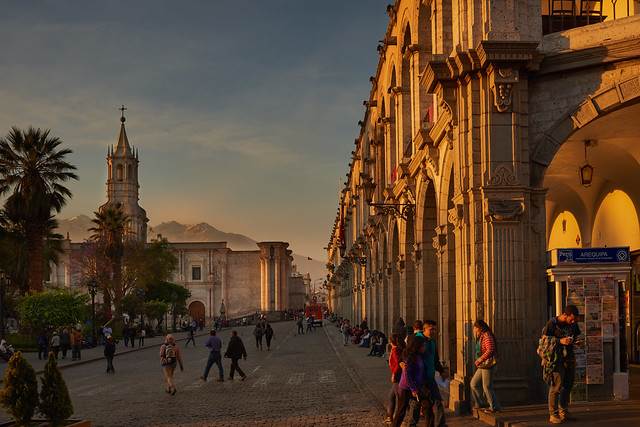Recently I was looking to see how Llama Expeditions’ tour prices compared to other guided tours in Peru. The range of prices was baffling. Some tours were so cheap I wondered how the tour operator was able to stay afloat. Other tours were so expensive I wondered how the operator was able to attract customers.
So how do you figure out which guided tour offers the best value? Here are ten questions to help you compare tour operator prices.
1) What is included in the published price? Some tours only include breakfast. Others include three meals a day. Some include flights in country while others don’t. On the Inca Trail, sometimes the services of a porter are an additional cost. Checking to see what is included can help you determine whether a tour is less expensive or whether it just means you will be spending more out-of-pocket during the tour.
2) How much free time is in the itinerary? The more free time in the itinerary, the less the tour costs the operator to run. This should translate into a lower cost to you.
3) What is the quality of the hotels? Cheaper tours often book guests into more basic hotels or hotels located in less desirable areas. I took a tour where the hotel was located in the financial district of a large city. This made finding a restaurant for dinner close to the hotel a challenge. There wasn’t sufficient traffic in the area after business hours for nearby restaurants to remain open. The tour company undoubtedly paid less for the hotel rooms than they would have if the hotel had been in a better location.
4) How will you travel during the tour? A friend told me that her tour group went to Cusco, Peru via an overnight public bus rather than a short flight. The bus cost less but took longer. Consider cost, convenience, and your preferred mode of transportation.
5) How big is the group? I was on a tour in Australia with 52 other travelers. This meant the tour company could divide the cost of the driver/guide between 53 people. It also meant the tour company could secure significant discounts at restaurants. Expect to pay a premium for a small group experience.
6) What is the guide to tourist ratio? In the case of my Australia tour, there was one guide for 53 people. Llama Expeditions’ tours have one guide for 8 people. I believe that more guides improve the quality of the experience. There is no need to strain to hear the guide’s explanations and no need to elbow fellow passengers to see what the guide is talking about. The downside is that a lower guide to tourist ratio equals a more expensive tour.
7) What off-the-beaten-track experiences are included in the tour? A standard tour doesn’t require much effort to plan and implement. Less effort usually equates to a lower price.
8) What is the reputation of the tour company for fair labor practices? This may be tough to discern. But, if you see a company’s prices are markedly below the competition, you might want to prepare to be extra generous with your tips to make up the difference. I don’t know about you, but I always feel guilty about taking a fabulous vacation knowing that the guides, drivers, and porters who make it all possible are barely earning enough to feed their families.
9) How well-known is the tour company? Some tour companies are extremely well-known, such as National Geographic Expeditions, so they can charge a premium price. Why? Their reputation has reduced the risk of traveling with them. In other words, you know you will have a certain kind of vacation experience.
10) What are the dates of the tour? Many tour companies offer a lower price for tours that take place off-season. In Peru, high season runs approximately from May to the end of August.
